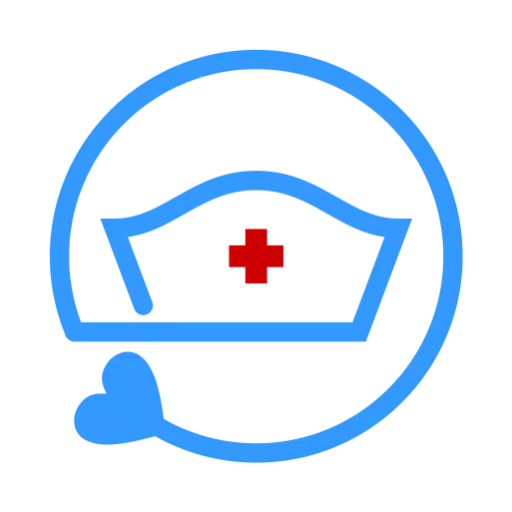Last updated on December 28th, 2023
Here we’ll formulate a scenario-based sample nursing care plan for Meningitis. It will include three sample nursing care plans with NANDA nursing diagnosis, nursing assessment, expected outcome, nursing interventions, and rationales.
What is meningitis?
Meningitis refers to the inflammation of the meninges (i.e., fluids and membranes covering the brain and spinal cord). It is a very serious disease with a high case fatality rate and debilitating long-term complications.
Meningitis can be caused by a number of organisms. Namely, Bacterial Meningitis, Viral Meningitis, Fungal Meningitis, Parasitic Meningitis, and Amebic Meningitis.
Among all the types of meningitis, bacterial meningitis is particularly dangerous. It is estimated that 1 in 10 people who get bacterial meningitis die and 1 in 5 have severe complications.
Nursing Care Plan for Meningitis – Case Scenario
An 18-year old male presents to the ED with complaints of headache, lethargy, nausea, and neck pain for 3 weeks. The patient says that he was sick with an upper respiratory infection a month ago and that, while the respiratory symptoms improved, he feels that he hasn’t been the same since. His mother reports that the patient began his first semester of college in August and that he currently resides in a dormitory on the school campus. She reports that the patient has been having memory problems, unable to recall what he ate for breakfast, or who he spoke to on the phone.
The patient appears to be diaphoretic and his temperature is 38.5 C. His heart rate is 114 BPM, blood pressure is 123/82 (72) mmHg, respiratory rate is 20 breaths per minute, and oxygen saturation is 98% on room air. He appropriately answers orientation questions but appears quite drowsy.
When the patient’s leg is lifted, flexing the hip to 90 degrees, the patient winces and is unable to straighten the leg, exhibiting a positive Kernig’s sign. While lying down, the nurse notices that when the patient’s neck is flexed forward, the hips and knees also flex, displaying a positive Brudzinski’s sign.
The patient is taken for a head CT scan which shows frontal sinusitis and ventriculitis. Following a lumbar puncture, the CSF analysis reveals protein is 163 mg/dL, glucose is 35 mg/dL, and white blood cells are 1200 mm3. The CSF is noted to be cloudy and reveals positive cultures with gram-positive streptococcus.
The patient is admitted to the hospital with Bacterial Meningitis.
#1 Nursing Care Plan for Meningitis – Risk for Ineffective Cerebral Tissue Perfusion
Nursing Assessment
Subjective Data:
- The patient complains of headache, lethargy, and neck pain
- The patient’s mother reports memory changes
Objective Data:
- Positive Kernig’s and Brudzinski’s sign
- CT scan shows ventriculitis
Nursing Diagnosis
Risk for ineffective cerebral tissue perfusion related to inflammation of the brain as evidenced by headache, lethargy, neck pain, and memory changes.
Goal/Desired Outcome
Short-term goal: The patient’s intracranial pressure will remain normal and the patient will verbalize an improvement of symptoms
Long-term goal: The patient will suffer no residual neurological dysfunction
Nursing interventions with rationale for Meningitis – Risk for ineffective cerebral tissue perfusion
| Nursing Interventions | Rationales |
| Monitor intracranial pressure and neurological status | Meningitis can cause an increase of pressure in the brain which can lead to serious brain damage. Signs and symptoms of increasing ICP include decreasing level of consciousness, vision changes, worsening headache, seizures, and increased respiratory effort |
| Administer Mannitol as prescribed | Mannitol is an osmotic diuretic that promotes cerebral blood flow and thus lowers ICP |
| Administer Dexamethasone as prescribed | Dexamethasone is a steroid that lessens inflammation |
| If ICP remains high, prepare to insert a lumbar drain | A lumbar drain is a small catheter inserted into the lower spine which facilitates the continuous drainage of CSF |
| Keep the head and neck in midline position and the bed elevated at 30 degrees | Turning the head can compress the jugular veins, preventing venous drainage and thus increasing ICP. Head elevation promotes venous drainage |
| Limit visitors and promote a calm, quiet, and dark environment | Minimizing stimulation helps decrease ICP. Darkness helps with the photophobia common with meningitis |
#2 Nursing Care Plan for Meningitis – Risk for Shock
Nursing Assessment
Subjective Data:
- The patient reports a recent upper respiratory infection
Objective Data:
- Temperature 38.5 C
- HR 114 BPM
- CSF is positive for gram-positive streptococcus
Nursing Diagnosis
Risk for shock related to infection as evidenced by fever, tachycardia, and positive CSF cultures
Goal/Desired Outcome
Short-term goal: The patient’s temperature and heart rate will normalize by the end of the shift
Long-term goal: The patient will receive the full course of antibiotics and the infection will resolve, leaving no long-term complications
Nursing interventions with rationale for Meningitis – Risk for shock
| Nursing Interventions | Rationales |
| Promptly administer antibiotics as prescribed | Antibiotics are the first line of treatment for bacterial meningitis. Mortality significantly increases the longer the time to antibiotic administration |
| For bacterial meningitis, place the patient on droplet precautions | Bacterial meningitis is spread through droplets and can be generated during coughing, sneezing, or talking. Masks, eye protection, and gloves should be worn for protection |
| Utilize temperature control measures to decrease fever | Antipyretics, cooling blankets, and ice packs can reduce fevers and subsequently decrease the oxygen consumption of the body |
| Enforce bedrest | Bedrest is recommended during the acute phase of infection to decrease oxygen consumption |
#3 Nursing Care Plan for Meningitis – Risk for Injury
Nursing Assessment
Subjective Data:
- The patient complains of lethargy
- His mother reports memory problems
Objective Data:
- The patient appears drowsy
- CT scan shows ventriculitis
Nursing Diagnosis
Risk for injury related to seizures and falls as evidenced by ventriculitis, lethargy, and memory problems
Goal/Desired Outcome
Short-term goal: The patient remains safe without no seizure activity by the end of the shift
Long-term goal: The patient has no long-term neurological dysfunction
Nursing interventions with rationale for Meningitis – Risk for injury
| Nursing Interventions | Rationales |
| Utilize padded side rails | Seizures are common with meningitis and side rails should be padded to prevent patient injury |
| Administer anticonvulsants as needed for seizures | Anticonvulsants such as Dilantin and Valium can terminate and prevent future seizures which can cause brain damage |
| Perform a fall risk evaluation and enact the proper safety interventions | Altered level of consciousness and risk for seizures means the patient is a high risk for a fall |
| Monitor for auditory and visual side effects | Hearing loss and visual disturbances are long-term complicati0ns of meningitis |
| Coordinate rehabilitative care in both the short and long term | Rehabilitation is needed throughout recovery to improve potential neurological dysfunctions |
Conclusion
Here, we’ve created a hypothetical scenario-based nursing care plan for a meningitis patient. Including nursing assessment, NANDA nursing diagnoses, expected outcome, and nursing intervention for meningitis with rationales.
Reference
Ackley, B., Ladwig, G., Makic, M., Martinez-Kratz, M., & Zanotti, M. (2020). Nursing Diagnoses Handbook: An Evidence-based Guide to Planning Care (12th ed.). Elsevier.
Herdman, T., Kamitsuru, S. & Lopes, C. (2021). NURSING DIAGNOSES: Definitions and Classifications 2021-2023 (12th ed.). Thieme.
Swearingen, P. (2016). ALL-IN-ONE CARE PLANNING RESOURCE (4th ed.). Elsevier/Mosby.


